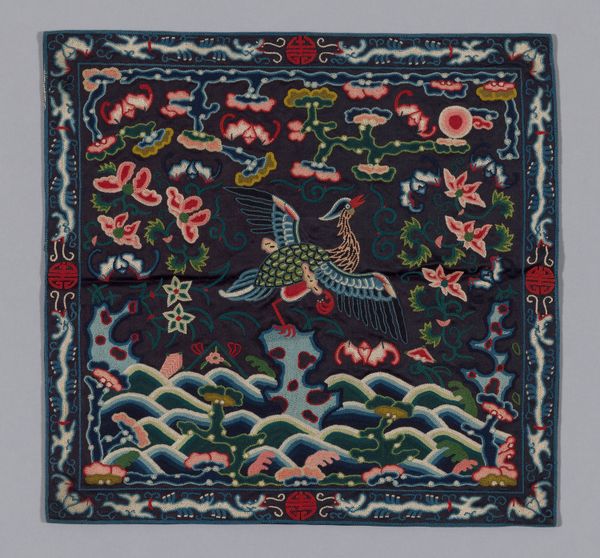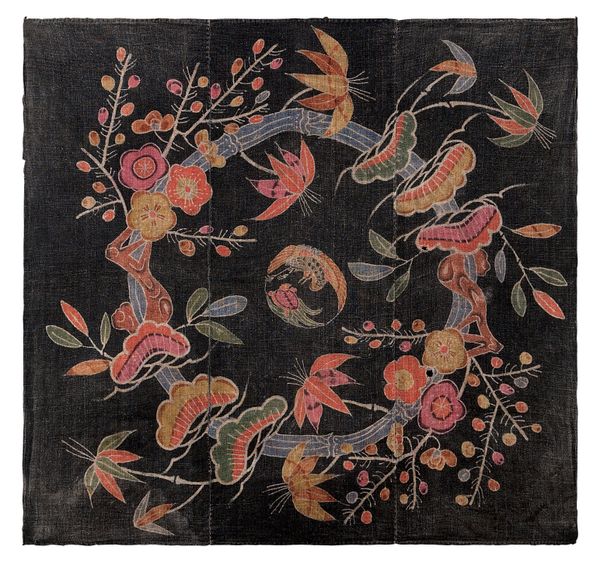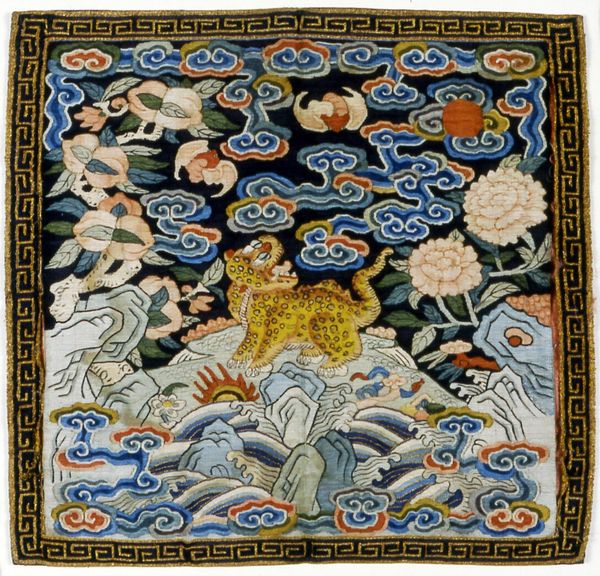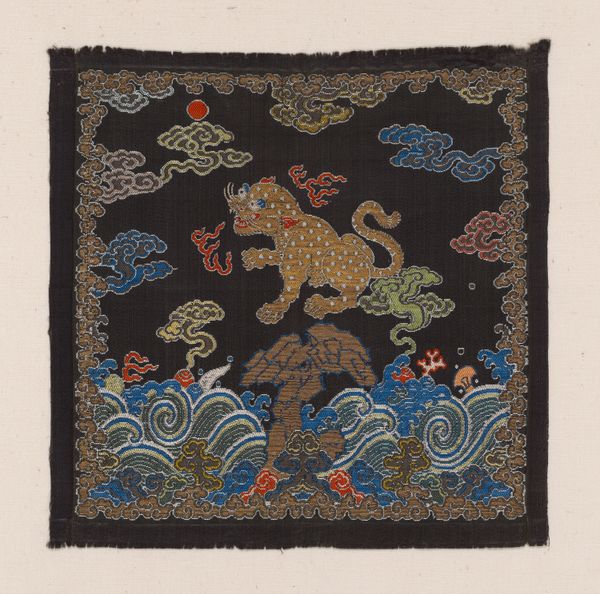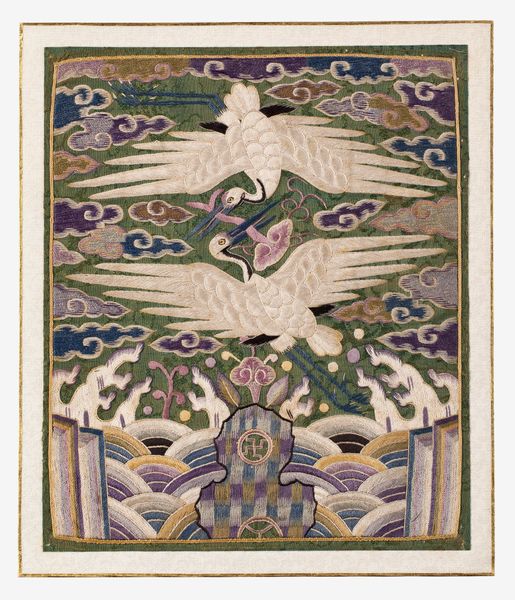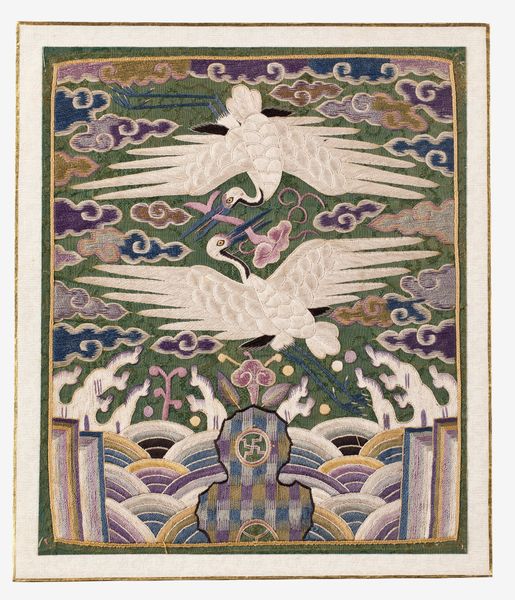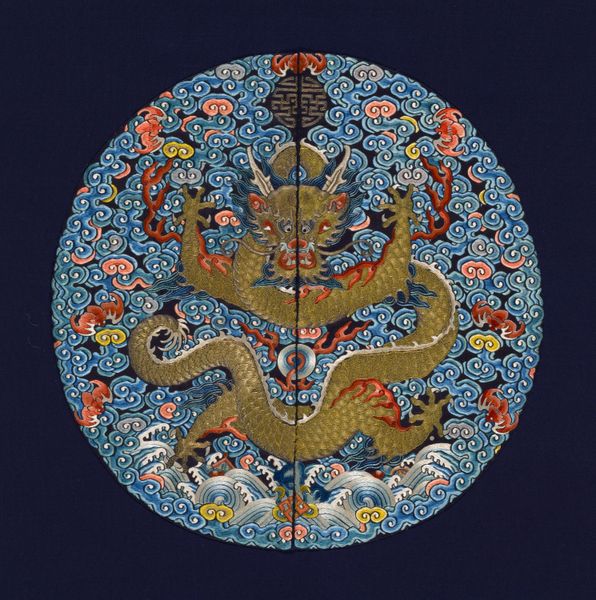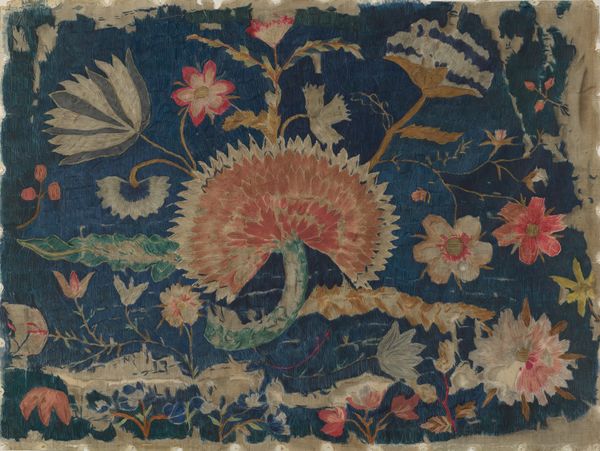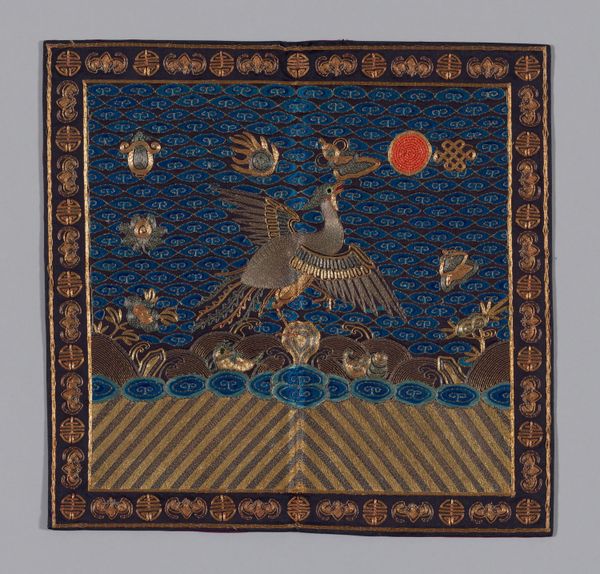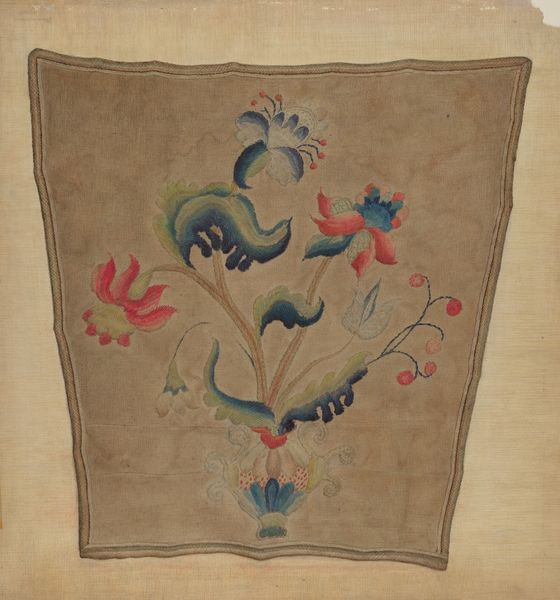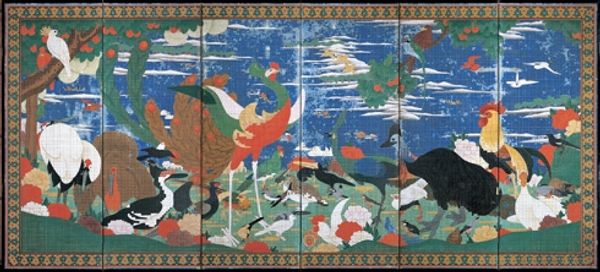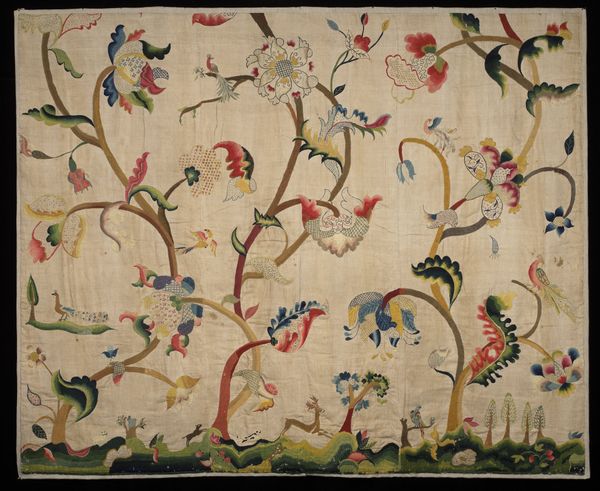
drawing, collage, tempera, painting, print, ceramic, textile, paper
#
drawing
#
collage
#
tempera
#
painting
# print
#
pattern
#
asian-art
#
ceramic
#
textile
#
paper
#
china
#
decorative-art
#
calligraphy
Dimensions: 30.3 × 30.8 cm (12 × 12 1/8 in.)
Copyright: Public Domain
Curator: Here we have a Buzi, a court rank badge, possibly dating from between 1644 and 1911 during the Manchu Qing dynasty. These textiles signified the wearer's status within the imperial court. Editor: It's a strikingly intricate square! I’m immediately drawn to the detailed embroidery, the serene blues, the auspicious reds, and of course, the crane, poised in mid-flight. It's all very captivating and seems densely packed. Curator: Indeed. Rank badges were potent visual symbols, carefully prescribed. The motifs, colors, and placement all communicated specific information about the wearer's position. For example, cranes, like the one here, were reserved for civil officials. Editor: So the bird isn't just decoration; it's a blatant announcement of the person’s role? It is also hard to look at a work like this without thinking about how it reflects rigid social structures, hierarchies and who benefits from such systems. Curator: Absolutely. Court attire was deeply intertwined with power structures. And yes, each detail from the sun signifying the emperor, to the carefully depicted waves and cloud bands, contributes to a codified visual language designed to uphold that power. Editor: Thinking about that symbolism within those rigid social constructs almost dulls its artistic impact. The natural beauty – the crane, the peach blossoms – they're all tools of control. It forces you to consider that beauty as a mask for inequality. Curator: Well, one could also view them as symbols of aspiration and the rewards that come with adhering to the imperial system. While the hierarchy was rigid, it did offer a path to advancement. And let's not forget the incredible craftsmanship on display. Editor: But at what cost? Even appreciating the artistry must include an awareness of the forced labor and exploitation that likely fueled such magnificent creations. It's difficult to separate aesthetics from ethics. Curator: It’s certainly a layered work, then – sparking conversations about power, social structures, labor, and artistic intention all at once. Editor: It serves as an opulent reminder to continually interrogate the stories behind these objects. I leave pondering questions of social stratification as the product is beautiful but the backstory far from pleasant.
Comments
No comments
Be the first to comment and join the conversation on the ultimate creative platform.
